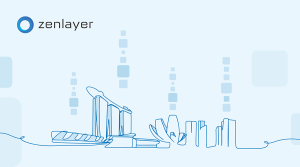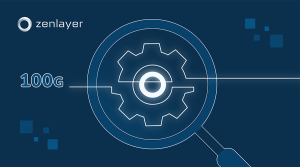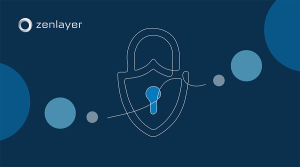Many enterprises are adopting cloud-first strategies, and transitioning their WAN architectures to the cloud to accommodate remote work and streamline access to digital resources. Going cloud-first enables business agility and allows companies to leverage advanced IT solutions from public cloud and edge cloud, and form hybrid cloud environments.
Cloud-based connectivity refers to the interconnectivity and network communication among public clouds and in hybrid computing environments that leverage public and private infrastructure. It helps companies to fully benefit from the cloud, and enjoy superior performance, security, agility, and cost savings.
Here are some cloud connectivity trends to keep your eye on heading into the second half of 2022.
Top enterprise cloud networking trends for businesses in 2022
1. Cloud computing at or near the edge
Edge computing is one of the most exciting emerging technologies and major supporting element of the cloud. In short, edge computing is a distributed IT framework that companies use to push storage and compute functions closer to users in global markets.
Edge computing allows companies to reduce the amount of data they must transfer into the public cloud. This limits data exposure and enhances privacy and security, and enables lightning-fast data communication.
2. Software defined WAN Access
Enterprises are increasingly turning to SD-WAN to enable cloud connectivity. SD-WAN helps increase operational visibility, deliver better performance, and simplify operations. According to one study, almost 98% of enterprises are engaging with SD-WAN in some way. And 37% have fully implemented SD-WAN. (1)
At the same time, many companies are continuing to rely on MPLS. In fact, more than half of companies that are expanding the role of the internet are making no change to their MPLS usage. Most companies will continue to deploy SD-WAN along with MPLS for the foreseeable future.
3. Cloud-delivered secure access service edge (SASE)
A recent Threatpost study indicates data exposure and cloud misconfigurations are the biggest threat to cloud security. (2) As such, most cloud-driven businesses are actively looking for ways to protect their sensitive data.
Organizations are turning to cloud-delivered secure access service edge (SASE) to deliver WAN security controls as cloud services directly to connection sources. SASE unifies networking and security services within a cloud framework, and makes it easier to protect data, applications, and users at the network edge. According to Gartner, SASE presents the fastest growing opportunity in the networking and network security market. Gartner predicts end-user spending on SASE will total $6.8 billion in 2022, up from $4.8 billion in 2021. And by 2025, more than 50% of organizations will have strategies to adopt SASE. (3)
4. Static & dynamic content distribution via direct cloud connectivity
Companies are now using cloud services to speed up static and dynamic content distribution. For example, Amazon offers CloudFront which delivers content through a worldwide network of edge locations. Services like CloudFront minimize latency and guarantee content delivery.
Zenlayer now has CloudFront-ready designation in the AWS Service Ready program and is helping AWS customers deliver ultra-low latency digital experiences to global end-users in emerging markets.
5. Full-mesh cloud networking
Full-mesh cloud networking is a strategy where each network device is interconnected via dynamic provisioning. In other words, all nodes can communicate with each other, and to the cloud.
This allows for maximum network redundancy compared to other networking strategies. With a full-mesh networking solution in place, businesses can avoid downtime when connections between two devices fail. Instead, the network can select an alternate path and maintain connectivity.
Of course, performance matters when building a full-mesh topology. It’s critical to leverage optimized, high-performance layer 3 connections.
For example, companies allow employees to use Azure office 365, will provide fast and reliable access from desktop to Azure cloud, and optimized interconnection among employees and satellite offices. Zenlayer’s cloud network product is offering low-latency networks to Azure.
6. High coverage performance monitoring and detection
Businesses today are also relying heavily on performance monitoring and detection for the cloud. Active detection is a crucial component for cloud networking, and something all businesses should deploy.
It’s a good idea to measure both link delay and packet loss, down to the chip level. This can help maintain superior performance and data delivery.
Simplify cloud connectivity with Zenlayer
As you can see, cloud networking requires many supporting elements like full-mesh topology, active detection, and local edge PoPs, to name a few examples. But trying to piece together your own cloud networking strategy can be costly and complex.
Zenlayer streamlines the entire process end-to-end with Cloud Networking, a global on-demand network as a service (NaaS) solution that instantly connects data centers, cloud services, and more. Cloud Networking lets you go to market faster by rapidly deploying global networks, with up to 40% less latency and jitter during peak hours.
Learn more about Cloud Networking.
Resources
(2) https://threatpost.com/security-turbulence-in-the-cloud-survey-says/179437/







